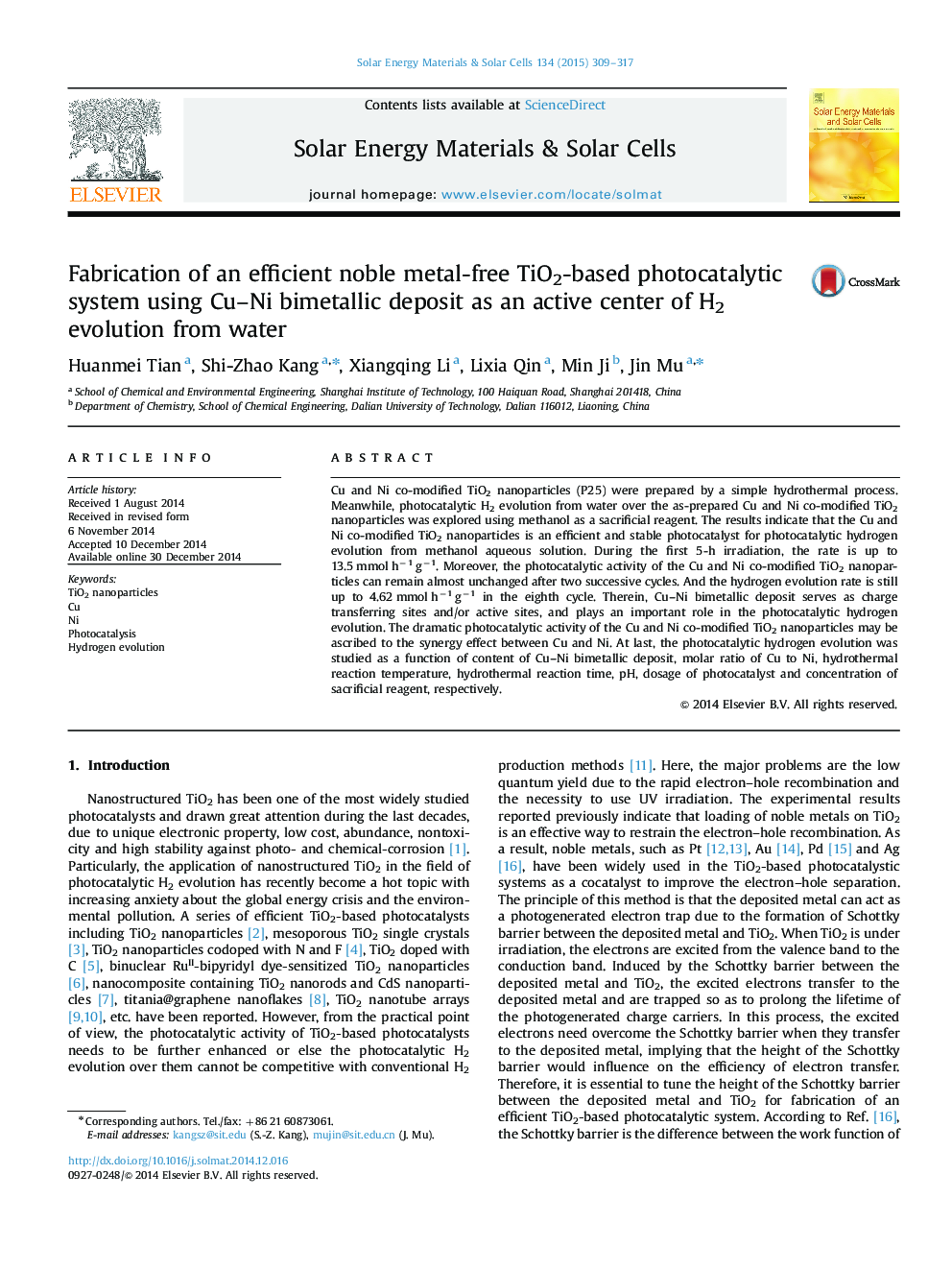| Article ID | Journal | Published Year | Pages | File Type |
|---|---|---|---|---|
| 77922 | Solar Energy Materials and Solar Cells | 2015 | 9 Pages |
•Cu and Ni co-modified TiO2 nanoparticles were prepared by hydrothermal process.•Cu/Ni@Ni core shell structure serves as a co-catalyst.•Stable efficient photocatalyst for H2 evolution with a rate of 13.5 mmol h−1 g−1.
Cu and Ni co-modified TiO2 nanoparticles (P25) were prepared by a simple hydrothermal process. Meanwhile, photocatalytic H2 evolution from water over the as-prepared Cu and Ni co-modified TiO2 nanoparticles was explored using methanol as a sacrificial reagent. The results indicate that the Cu and Ni co-modified TiO2 nanoparticles is an efficient and stable photocatalyst for photocatalytic hydrogen evolution from methanol aqueous solution. During the first 5-h irradiation, the rate is up to 13.5 mmol h−1 g−1. Moreover, the photocatalytic activity of the Cu and Ni co-modified TiO2 nanoparticles can remain almost unchanged after two successive cycles. And the hydrogen evolution rate is still up to 4.62 mmol h−1 g−1 in the eighth cycle. Therein, Cu–Ni bimetallic deposit serves as charge transferring sites and/or active sites, and plays an important role in the photocatalytic hydrogen evolution. The dramatic photocatalytic activity of the Cu and Ni co-modified TiO2 nanoparticles may be ascribed to the synergy effect between Cu and Ni. At last, the photocatalytic hydrogen evolution was studied as a function of content of Cu–Ni bimetallic deposit, molar ratio of Cu to Ni, hydrothermal reaction temperature, hydrothermal reaction time, pH, dosage of photocatalyst and concentration of sacrificial reagent, respectively.
Graphical abstractFigure optionsDownload full-size imageDownload as PowerPoint slide
